Special assemblages of minuscule fossils bring dinosaur ecosystems to life
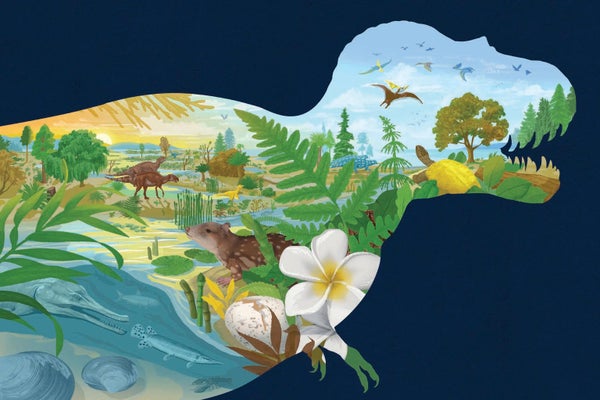
Enter the fossil gallery of a natural history museum, and you’re likely to encounter spectacular skeletons of some of the most manifestly awesome creatures ever to have walked our planet: dinosaurs. From towering sauropods and fearsome tyrannosaurs to tanklike ankylosaurs and horned ceratopsians, dinosaurs dominate our conceptions of the past. But to understand these animals and their world, scientists must look beyond the dazzling remains of Apatosaurus, Tyrannosaurus, and other icons to tiny fossils that appear, at first glance, distinctly unimpressive. You won’t see these humble microfossils on public display, but they provide some of the best clues we have into the lives and times of our favorite prehistoric beasts.
For the past three decades we have been conducting expeditions to recover such fossils in the Upper Missouri River Breaks National Monument, a 149-mile expanse of astoundingly beautiful badlands in central Montana. Here in the very place where scientists got their first look at North America’s dinosaurs starting in the 1800s, our team has discovered a wealth of fossils from an extraordinary array of previously unknown organisms that lived alongside those better-known dinosaurs. These fossils are a record of an ecosystem that flourished 10 million years before a killer asteroid slammed into Earth.
We have been targeting special fossil assemblages called vertebrate microfossil bonebeds, or VMBs. These sites preserve thousands of small, hard parts of a diversity of animals, ranging from traces of microscopic parasites, to the scales of minnows, to bits of much bigger frogs, turtles, birds, mammals, crocodiles and dinosaurs. We find the fossils both in the field and in the laboratory, where we use dissecting microscopes to search through sediment for the minuscule remains. These well-preserved fossils are providing some of the highest-resolution pictures yet of a dinosaur ecosystem. They reveal the often overlooked creatures that scurried and swam around the feet of dinosaurs, buzzed annoyingly in their ears and maybe even preyed on their young—and scavenged their dead. With them in the mix, the ancient world springs to life.
The two of us bring very different perspectives to studying VMBs. Kristi works to understand the biology of the biggest dinosaurs of all time—the long-necked, quadrupedal plant eaters called sauropods. These giants have captivated her for as long as she can remember. Kristi has been happiest toiling in a sun-drenched quarry, slowly excavating limb bones far bigger than she is. Ray, in contrast, is a geologist who works in the rocks to decipher how bonebeds—accumulations of skeletons—form and what they reveal about the environments of an organism’s life and death. Luckily for us, in addition to being married, we are each other’s closest scientific collaborators.
Long before we joined forces, Ray had been busy working in fossil deposits that were the antithesis of the ones Kristi was focused on. Rather than spending an entire field season excavating a single enormous skeleton, Ray might collect thousands of fossils in a few hours in the VMBs. This achievement sounds amazing, but most of the fossils from the VMBs are so small that you could sneeze and blow them off your fingertips. With her enduring love of digging up the biggest of the big, Kristi was a reluctant convert to the study of VMBs. But looking at the tiny remains with handheld lenses and microscopes revealed perfectly preserved bones of a menagerie of creatures that lived in the shadows of her giants. Microfossils from the VMBs, Kristi realized, have outsized power when it comes to exposing the workings of dinosaur ecosystems.
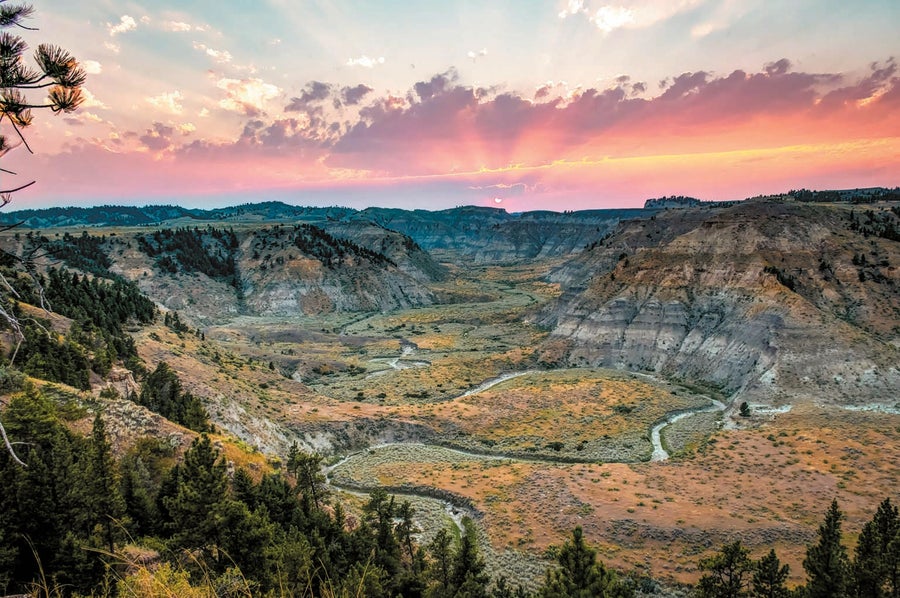
Through our work in the Upper Missouri River Breaks National Monument—or the Breaks, as it is known—we’ve been able to reconstruct one such ecosystem in remarkable detail. It’s a scene many decades in the making. In 1855 a 26-year-old explorer and naturalist named Ferdinand Hayden was the first to investigate the Breaks geologically. For a few short days he traversed the roughly 76-million-year-old outcrops there. His foray into these fossil-rich rocks yielded the first scientific collection of dinosaur bones and teeth discovered in all of North America. But Hayden didn’t just collect dinosaur remains. From what we would now recognize as a classic VMB, he also picked up a handful of bones and teeth from fish, turtles and crocodiles. With his first major find, Hayden not only populated our view of prehistoric North America with a bunch of dinosaurs but also began to reveal an ancient ecosystem.
For more than 30 years we, along with our gangs of undergraduate students, have followed in Hayden’s footsteps. We do it old school, canoeing and hiking through the badlands and braving the heat, mud, bugs and snakes as we search for remnants of animals that lived in the Cretaceous period. Our work has produced tens of thousands of bones and teeth of dinosaurs and the animals that lived alongside them. We’ve learned how these special fossil assemblages form, which creatures these fossils represent and some of what they can teach us about the complex Cretaceous world that dinosaurs made famous.
At the heart of the Breaks lies the Missouri River, the landscape architect responsible for carving the dramatic “break” in the undulating plains that gives the area its name. Rocky exposures soar many hundreds of feet above the river valley. These striated layers of sandstone, mudstone and coal make up the Judith River Formation.
Marine sandstones and shales found near the bottom and top of the formation indicate that the sea was never far away in the Cretaceous. Back then, Judith River sediments were accumulating near the coastline of a shallow inland sea known as the Western Interior Seaway. The seaway, which stretched from the Arctic Ocean to the Gulf of Mexico and east through what is now Hudson Bay, essentially divided North America into three parts. In the Cretaceous, the sea’s shoreline was just a few miles to the east of where we work now, making our field area in the Breaks beachfront property. Ancient rivers flowed from the nascent Rocky Mountains toward the Western Interior Seaway. Swampy floodplains surrounded these Cretaceous rivers; it was an environment analogous to Louisiana’s Atchafalaya Basin or the Florida Everglades.
Such places offer the perfect conditions for producing an exceptional fossil record. Warm, wet environments have an abundance of food and water that can support many different plants and animals. When these organisms died in what is now the Breaks, their remains accumulated slowly and steadily in the quiet lakes and wetlands, eventually getting covered in fine-grained mud. The sediment chemistry in these swampy systems is similarly favorable to long-term preservation. Instead of dissolving delicate bones, teeth and shells, the chemical conditions promoted fossilization, basically transforming these body parts into stone.
Geological forces have also played a part in preserving these organisms for posterity. The entire region was tectonically active, part of a huge geological basin that formed as nearby rising mountains pushed down on Earth’s crust. This basin allowed the Judith River Formation sediments and the fossils they preserved to accumulate instead of being eroded away into the sea. The erosion that this region is now experiencing makes it possible for us to find the fossils in the rocks.
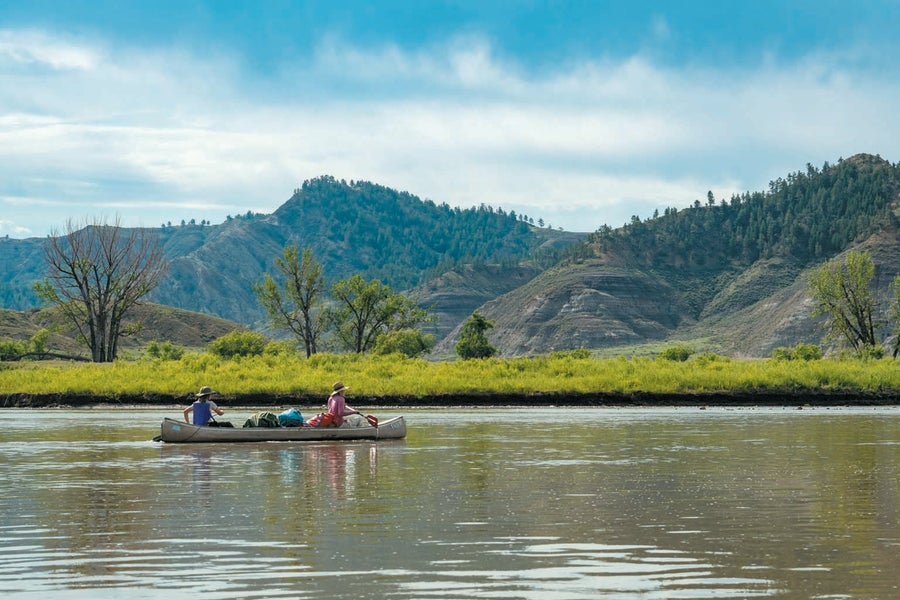
Although parts of the Judith River Formation preserve big, beautiful dinosaur skeletons, the areas we target, deep within the river valley, are a little different. These sites—the VMBs—preserve a multitude of bones, teeth and other bits just a fraction of an inch in size from organisms ranging from dinosaurs to mollusks.
Scholars have long debated how VMBs form. One of the first hypotheses suggested that the fossils preserved in VMBs had collectively passed through the digestive tracts of ancient carnivores and that the sites represent concentrations of feces. Although scatological assemblages do exist in the fossil record, this explanation cannot, on its own, account for the quality of preservation and the geological context of the Judith River VMBs. Another hypothesis held that VMBs form when the flow of a river picks up and carries small, hard parts from an array of animals and deposits them in a single spot. But the geological and forensic data we have collected in the Judith River Formation are largely inconsistent with this transport-based scenario.
Along with our collaborator Matthew Carrano, dinosaur curator at the Smithsonian Institution’s National Museum of Natural History, we’ve spent lots of time dissecting the fine-scale details of more than 20 Judith River Formation VMBs and developed a new model for how these sites develop. Our data indicate that these VMBs accumulated within ponds and lakes. Fine-grained sediments rained down on the remains of animals that lived and died in and around these long-lived aquatic ecosystems. Over time tough skeletal remains collected on the bottom and formed fossil deposits. As bottom-dwelling organisms burrowed through the mud, scavenged carcasses and churned up sediments in the course of their daily routines, individual skeletons broke, and their elements dispersed.
This scenario explains why VMBs yield skeletal fragments that are generally disarticulated and why the body parts that persist tend to be particularly durable and robust (think teeth, small bones and scales). When you study VMBs, you can’t connect a thigh bone to a knee bone like you can when you find a lone dinosaur skeleton. But VMBs tell us much more than a single large skeleton can because they preserve communities.
Where the Pavement Ends … the Fun Begins.” That’s the slogan printed on the beer koozies at our local bar in the town of Winifred, Mont., population 200, more or less. There is no better description of this little prairie oasis. Winifred is the last stop in civilization before we leave the pavement for dirt tracks and river currents. We’re headed to an area where few people travel, which is just the way we like it. For us, as it was for Hayden, the best ways to get to the farthest and most interesting reaches of the Breaks are by boat and on foot.
Once we leave the pavement behind in Winifred, the tracks wind down to the river, where the heat radiates off the rock walls of the valley—it’s usually at least 10 degrees hotter on the river than it is up in Winifred. The air is still, and the Breaks are silent apart from the occasional clacking and snapping of wings as grasshoppers launch themselves skyward.
Only a few roads cut through this territory. One of them leads to Stafford-McClelland Ferry terminal, where overhead cables guide a platform ferry across the Missouri River. It’s one of the only places to cross the river for miles, and it often serves as the launch point for our flotilla of canoes. Once we start our journey, chances are slim that we’ll see any other humans until we go ashore farther downstream. We’re loaded to the gunwales with the gear we’ll need for a 50-mile paddle, including as much water as we can carry, all our food, tents, and collecting supplies, including several five-gallon buckets, mostly for collecting fossil-bearing sediment (at least one will serve as our toilet for the next several days). The only running water on our journey will be the silty river. Baths will be dunks that require wading through sticky, knee-deep mud. They cool us off, but we usually end up dirtier than before.
The badlands hug the river around us, creating a corridor of rock with nothing but sky overhead. Bald Eagles nest in stands of cottonwoods that line the banks, and Osprey scan the river ahead of us in search of a meal. Beavers surface and slap their tails in warning, the sound echoing off the hillsides and reverberating downstream. Every now and then we can discern the silhouettes of huge catfish and carp just under the murky surface, and occasionally a soft-shelled turtle pokes its pointed head up midriver to check us out.
In the afternoon stillness, the sun beats down, heating our aluminum canoes and our shoulders. We stick our feet overboard to cool down. We swat away mosquitoes and no-see-ums, gnats that love to bite ears, eyelids and hairlines. If the wind is up, we might tie the canoes to one another with bungee cords and raft together, holding up a tarp as a makeshift sail and speeding away downstream. Late in the afternoon we’ll find a spot in the welcoming shade of the cottonwoods and set up camp.
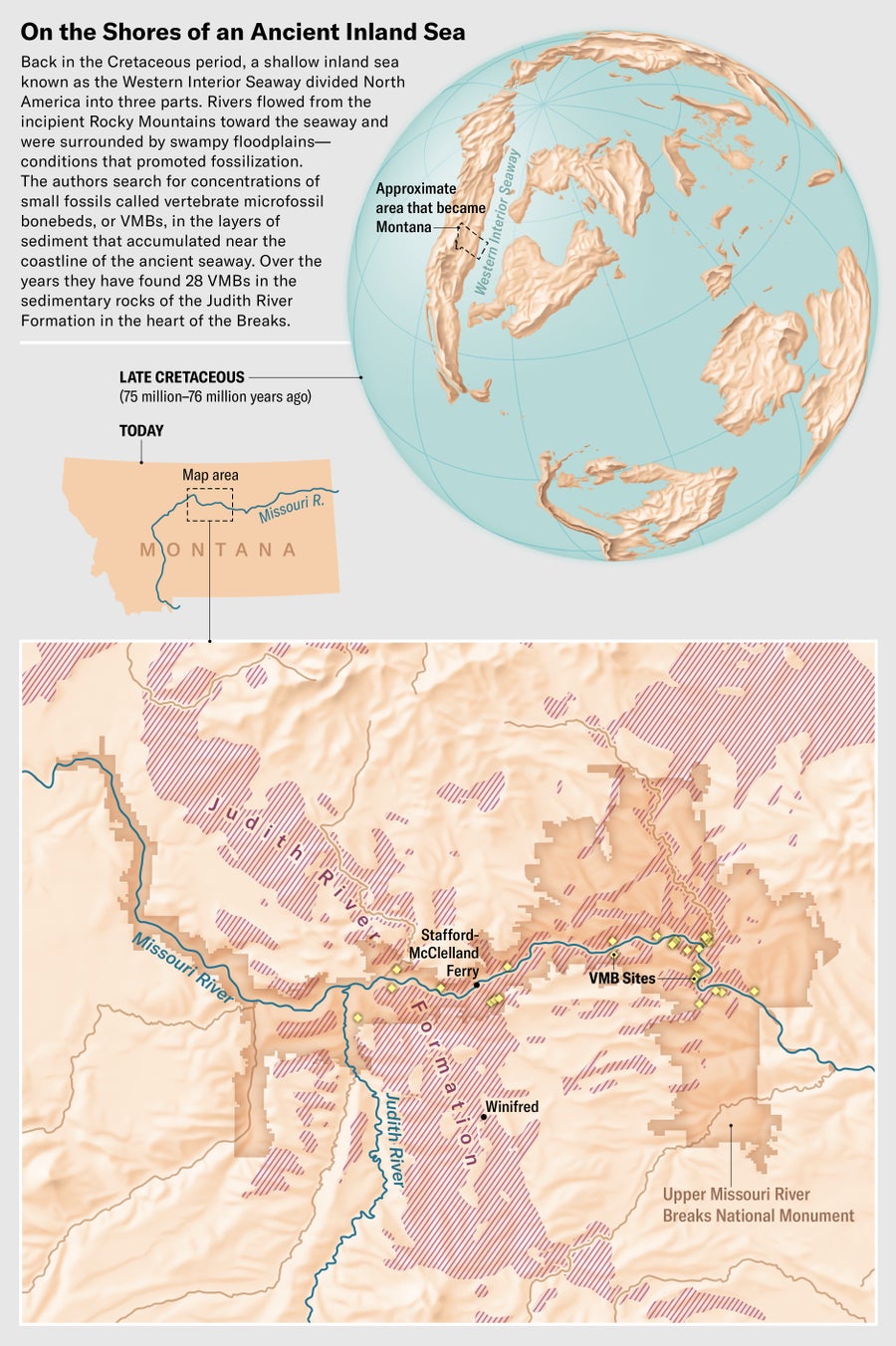
We wake with the sun and hike out into the hills, looking out for rattlers as we dodge spiky yucca and cactus and weave our way through stands of aromatic sagebrush. We occasionally spook a bighorn sheep resting in the shadows or get spooked ourselves as another sheep trots along the highest cliffs above us. Our eyes are trained on the ground and nearby slopes as we prospect for VMBs.
It might seem impossible to find such small fossils in this vast landscape, but there are a few clues to guide us. We search for just the right kind of sedimentary rock: dark gray and brown mudstone, maybe with some coal-black fossilized plants that indicate a swampy environment, and lighter gray sandstones bearing angled patterns that reflect ancient currents. We also look for exposures that sparkle in the sun. The sparkle comes from fragments of fossilized clams and snails that lived and died in Cretaceous ponds and lakes. VMBs are often found within these glittering layers of rock.
When someone spots a few broken fragments of fossils that have weathered out from a rock layer somewhere upslope, we’ll track those bits and pieces back to their source, slowly crawling up the incline on our hands and knees, noses to the ground, eyes scanning for the tiny fossils emerging from the eroding rocks. Eventually we’ll hit the layer where the fossils are concentrated. We can spend an entire day or more on a single small hill, using an ice pick or a pocketknife to help gently nudge fossils from the soft rock of the VMB. We collect everything that we can see, carefully adding our fossils to sample bags and vials. After we’ve scoured the surface, it’s time to bring in the rock hammers, hoe picks and shovels. We excavate blocks of the bonebed and load them into our five-gallon buckets and giant sample bags.
Once we’re back at our college lab, we load the fossil-bearing sediment into a contraption we call “the Dunker.” This automated device washes the bonebed sediment through stacked sieves with different mesh sizes. We place the sediment chunks into one sieve that captures any fossils and bits of rock larger than about 0.08 inch in size but allows smaller pieces through. Below this sieve is a fine-mesh sieve that captures fossil bits down to 0.02 inch in size (smaller than a pinhead). After a few hours in the Dunker, most sediment clumps break down, and the sediment washes away, leaving behind a residue of bones, teeth, shells and other fossils in the sieves.
With the fossils recovered, we move to microscopes. Our students have spent hundreds of hours focusing on the fossils retrieved after sieving. They use superfine paintbrushes with bristles thinned to just a few hairs to sort through the fossil concentrates. It is remarkable what the VMB world looks like under magnification. What the naked eye perceives as mere specks of black resolves into perfect little teeth, jaws, limb bones and vertebrae. The diversity of the Judith River Formation comes to life.
Let us introduce you to the cast of characters we have met in the VMBs. We begin in the terrestrial realm, where the stars of the Cretaceous, the dinosaurs, lived. Dinosaurs had teeth that were replaced throughout life, and these teeth are some of the most common and easily identified fossils in our collections. Some of the dinosaur teeth in our VMBs belong to armored ankylosaurs such as those in the Zuul genus and dome-headed pachycephalosaurs such as Stegoceras. By far the most abundant dinosaur teeth in our samples come from herbivorous dinosaurs with rows of teeth that formed a grinding surface functionally similar to the molars of mammals. Usually we find only ground-down fragments of these teeth, so identifying particular species can be tough, but we’ve recovered teeth from duck-billed hadrosaurian dinosaurs, including Brachylophosaurus, and from horned and frilled ceratopsians, such as Spiclypeus.
Our sites have also yielded traces of carnivorous dinosaurs, which were the top predators in this Late Cretaceous ecosystem. Sharp, serrated teeth document the presence of Tyrannosaurus rex cousin Daspletosaurus and the small, feathered theropod Troodon. We’ve also found claws and vertebrae from the toothless, ostrichlike theropod Ornithomimus. Dinosaurs ruled the skies of the Judith River ecosystem, too, in the form of birds. Small, fragile animals typically don’t get preserved very well, but many early birds had teeth, which are durable enough to survive in VMBs.
Like birds, mammals are another elusive group in the Late Cretaceous fossil record. But we know they made their way to the Judith River Formation lakes and ponds because we occasionally find teeth from little furballs such as Alphadon, which was similar to living opossums.
These mammals may have fallen prey to some of the many aquatic reptiles that lived in and around the ancient lakes here. Crocodiles and alligators, big and small, hunted the open waters and the shorelines. Their teeth, vertebrae and bony plates of armor are among the most common VMB fossils. One unusual creature in the lineup is Champsosaurus. This long-snouted, sharp-toothed animal looked somewhat like today’s gharial, a fish-eating crocodilian that ambushes its prey. The spool-like vertebrae and broad ribs of Champsosaurus turn up frequently at our sites, signaling that it was a prominent player in the Judith River Formation ecosystem.
As you might expect in this 76-million-year-old water world, fish were abundant. Our collections include thousands of vertebrae, teeth and scales representing both large fish and minnows. These fish would have schooled in the Judith River Formation lakes, making the water shimmer with their collective movement. Freshwater sharks also swam in these waters, as did Myledaphus, a guitarfishlike creature with flat, diamond-shaped teeth perfect for crushing small crustaceans and mollusks.
Ferocious gar fish (Lepisosteus) were also numerous. Their scales help us document a fascinating story of ecological interaction among species in the Judith River Formation. The bodies of gars are protected by an armor of interlocking scales covered in a special type of enamel-like tissue called ganoine. When crocodiles ingest gars, the acids in their harsh digestive systems strip away the outer layer of ganoine on the fish scales, leaving the scales corroded. We can see from the condition of the gar scales in the VMBs that crocs were eating gars back then just as they do now.
These watery ecosystems harbored a variety of amphibians, too. Intriguingly, many of the minute amphibian limb elements and ribs that we recover from our sieves are covered in even tinier tooth marks. These traces were made when a gar fish, a baby crocodile or even a small theropod dinosaur took a bite, scraping its teeth along bone as it did.
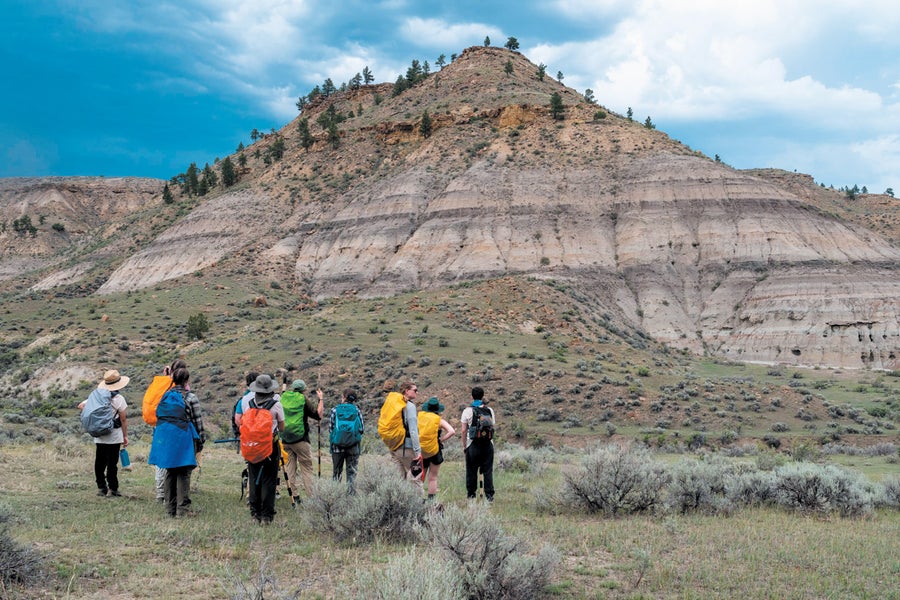
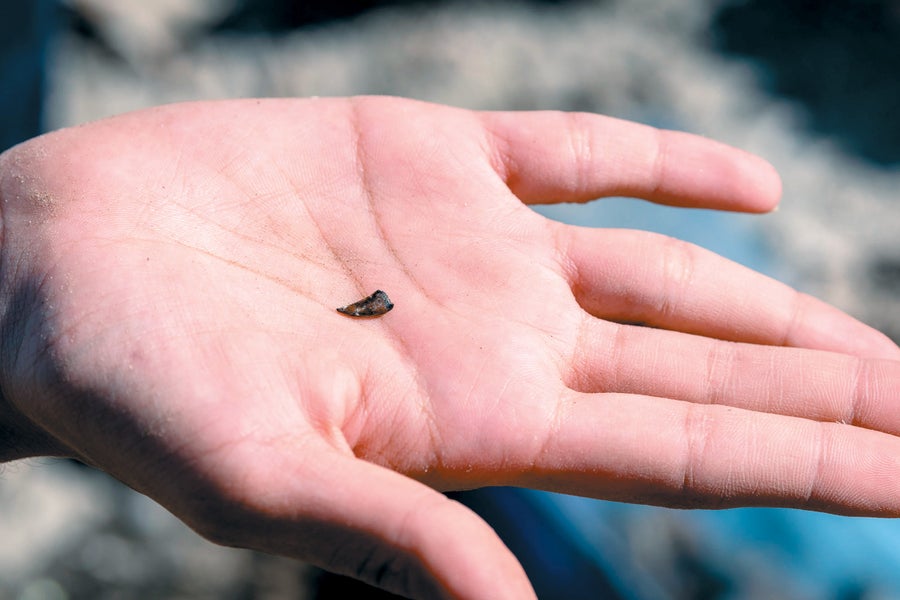
Amphibians were not the only creatures that moved between water and land in this ecosystem. Turtles also spent time both in the lake and on terra firma. We’ve found bony plates from turtle shells with distinctive ornamentation patterns characteristic of several soft-shelled turtle species, as well as snapping turtles. Lizards made a home here, too. We have confirmed the presence of several different lizard groups, from close relatives of living iguanas, to long-tailed skinklike forms, to heavily armored insect-eating species.
We also find fossil eggshells in our VMBs. When discovered in isolation, eggs and eggshells can be tricky to link to a particular species. For this reason, there is a special classification system for eggshells called ootaxonomy. We begin by describing the outer and inner surfaces of the shell, noting the color and texture, as well as the distribution of the pores that allowed gas exchange with the developing embryo. Then we look at thin sections of the shell under a microscope to see its crystalline structure. In addition, we can study the chemistry of the eggshells for clues to what types of organisms might have laid these eggs. By assessing fossil eggshells in this way, we have been able to establish that theropod and duck-billed dinosaurs, as well as a variety of crocodiles and turtles nested in the lush lowland environments preserved within the Judith River Formation.
Every once in a while, just when our vision starts to blur after hours of looking at VMB residues through a microscope, we spot something new that isn’t a recognizable bone, tooth, or other body part. Sometimes these enigmatic remains turn out to be trace fossils—records of an animal’s activity but not part of the animal itself. These fossils, which can be tooth marks (like those seen on the amphibian bones), footprints or feces, among other traces, all signal the presence and behaviors of creatures that we might not detect otherwise.
Small, doughnutlike structures known as gastroliths, or “stomach stones,” are one type of trace fossil that occurs in our samples. They show that crayfish lived in the lakes, ponds, rivers and streams of the Breaks back in the Cretaceous. In modern crayfish, gastroliths serve to store calcium carbonate, an essential component of their exoskeletons. When crayfish grow, they must molt their old exoskeleton and build a new, bigger one. Rather than discarding the old armor entirely, they conserve its precious calcium carbonate by sequestering it in gastroliths until they can redeploy it. The gastroliths we find in the Judith River Formation hint that Cretaceous crayfish, like their modern counterparts, were experts at reducing, reusing and recycling.
Perhaps the most mysterious trace fossils in our VMBs are igloo-shaped bumps that we frequently find on fragments of clamshells. We puzzled over these peculiar features for years before we finally realized that they are identical to the modern-day structures that form when parasitic flatworms infest clams. The clams build the igloos as an act of self-defense, attempting to contain the invading parasite in a mineralized chamber. We have every reason to believe our Cretaceous clams were doing the same thing to protect themselves.
Parasites tend to have small, squishy bodies—characteristics that do not bode well for fossilization. As a result, scientists usually can’t include these ecologically important animals in their reconstructions of fossil food webs. The Judith River VMB clamshell igloos not only confirm the presence of flatworms in this ecosystem but also push back the oldest known occurrence of this type of parasitic interaction between flatworm and clam from just 6,000 or so years ago to 76 million years ago. Modern-day flatworm parasites have complex life cycles involving multiple host species. Clams serve as just one host in the flatworm life cycle, with clam-eating shorebirds often serving as the ultimate host. Maybe in the Cretaceous period flatworms created lines of ecological connection between organisms as different as clams and dinosaurs.
The unassuming fossils of the Judith River Formation VMBs have given us amazing insights into this vibrant lost world of the dinosaurs, more than we ever could have imagined possible. Yet we know there is still so much more to learn. Discoveries like the clamshell igloos underscore what Ferdinand Hayden figured out on his trailblazing journey through the Breaks back in 1855: no fossil is too small or too obscure to reveal amazing, unexpected details about ancient ecosystems
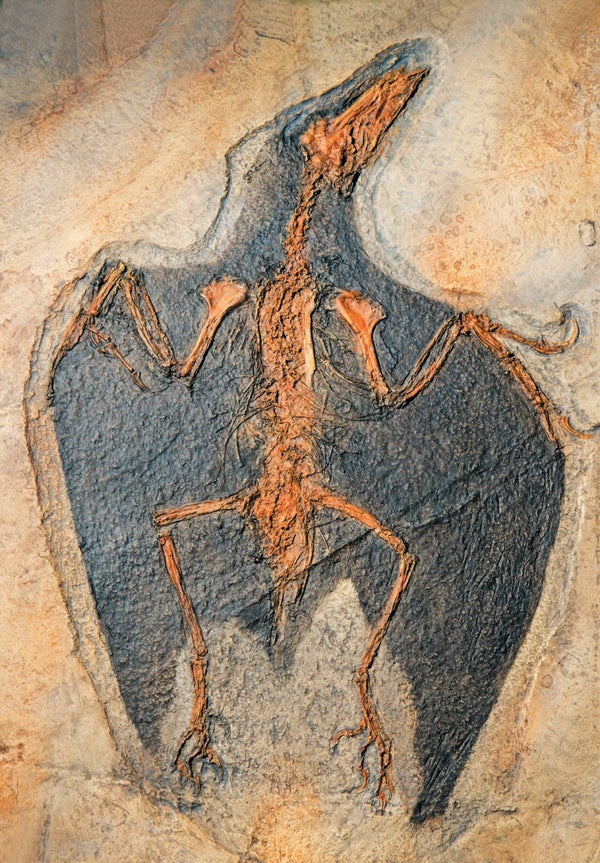


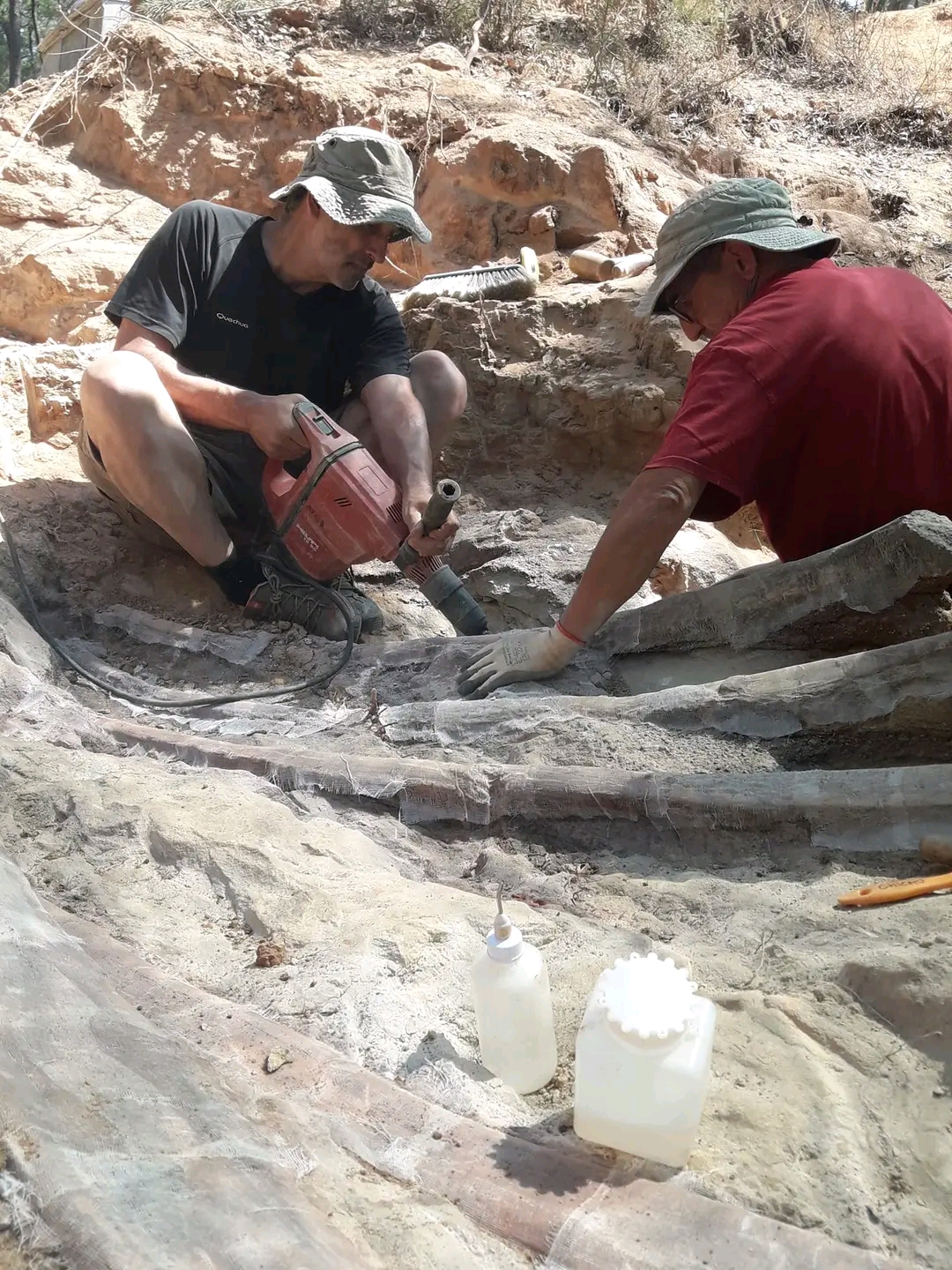
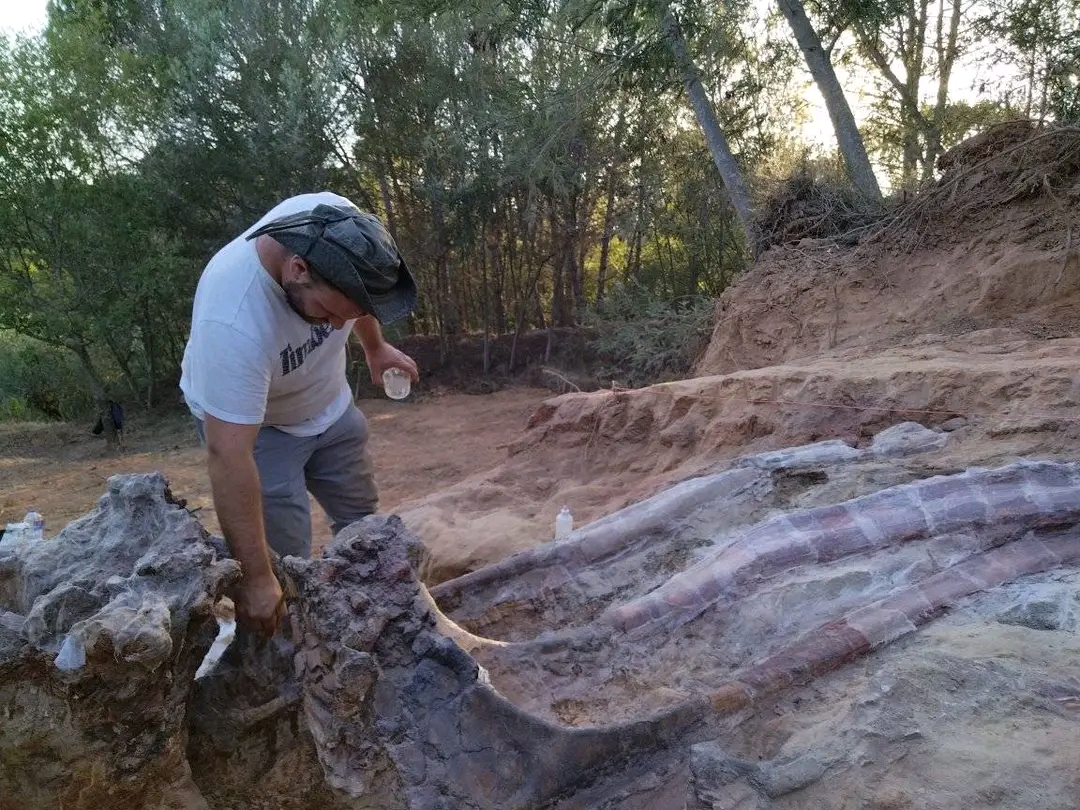
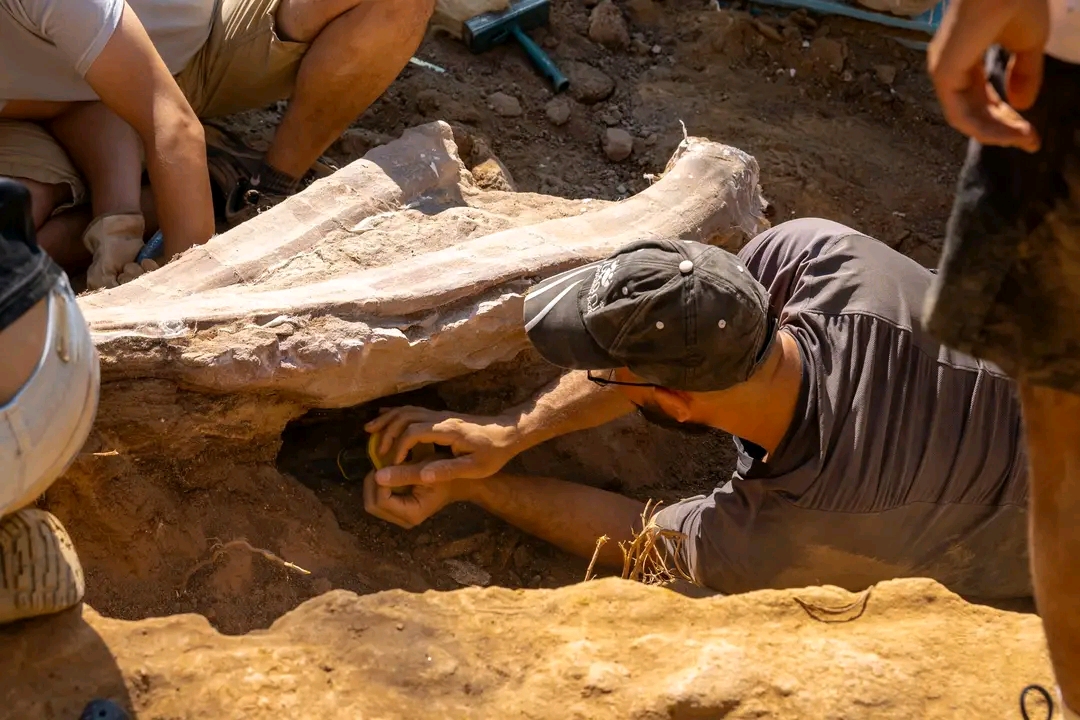
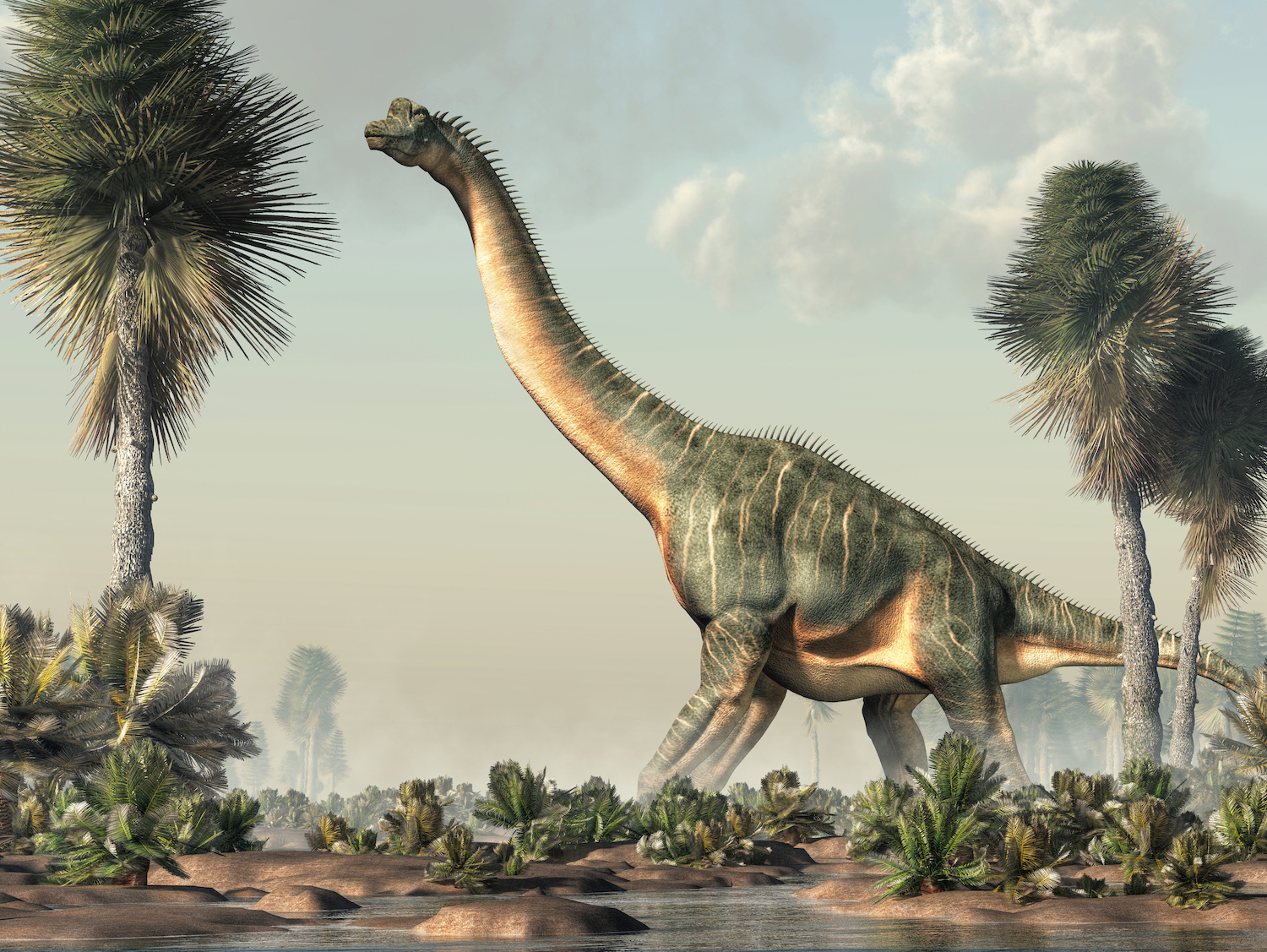
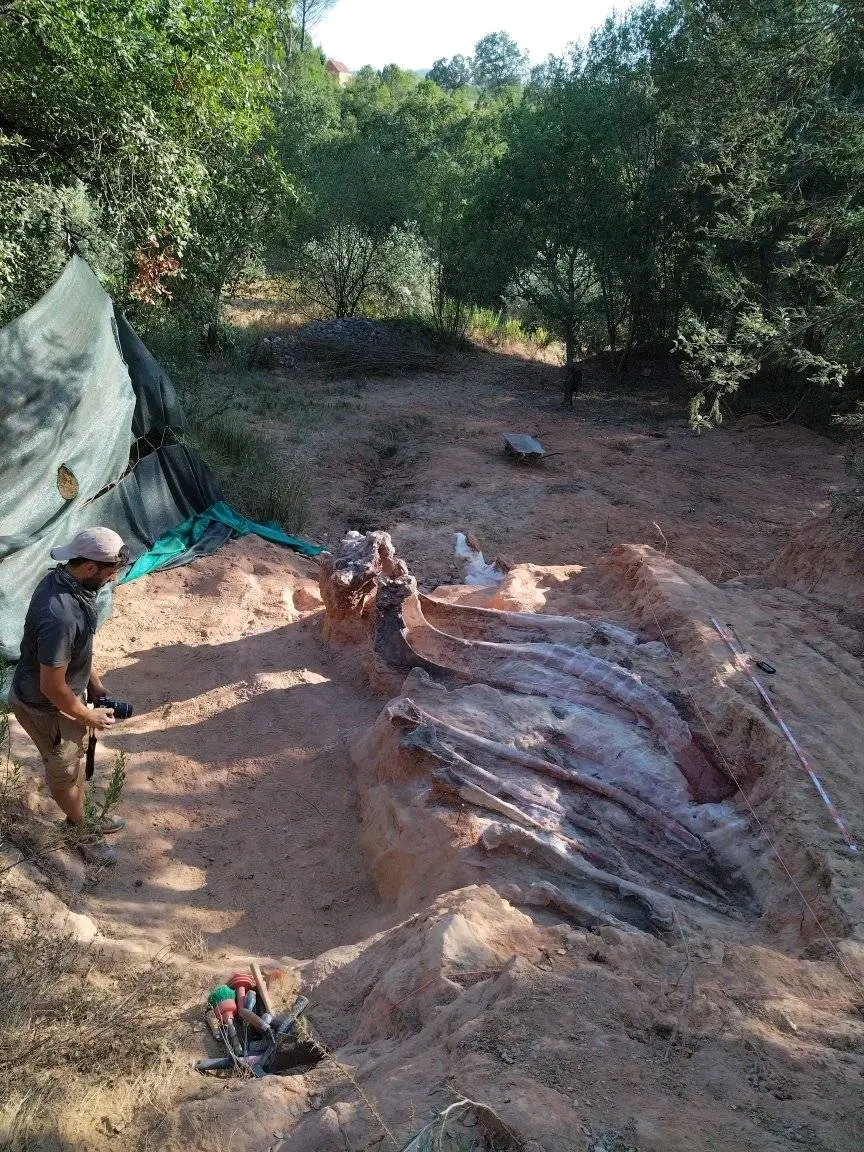
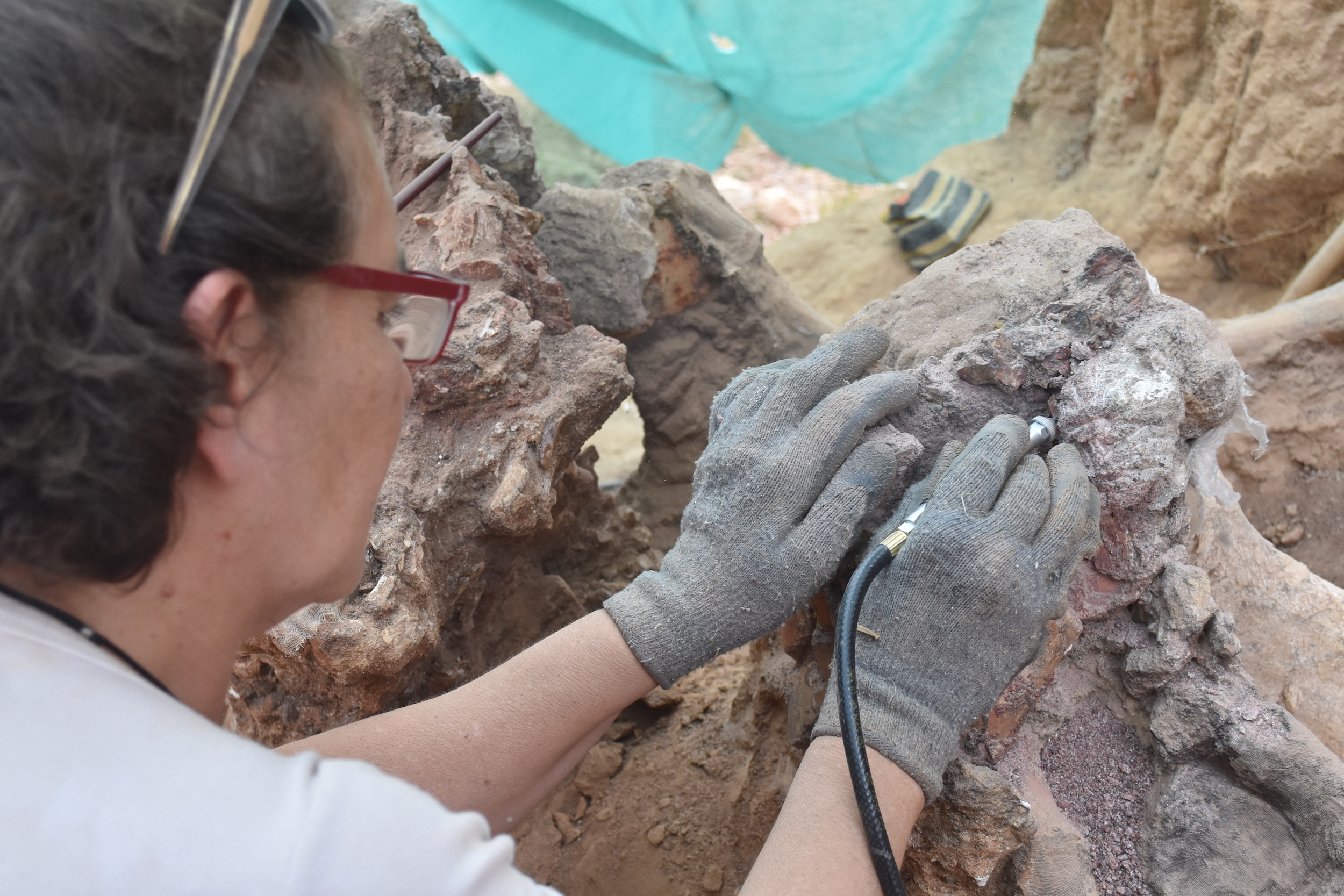


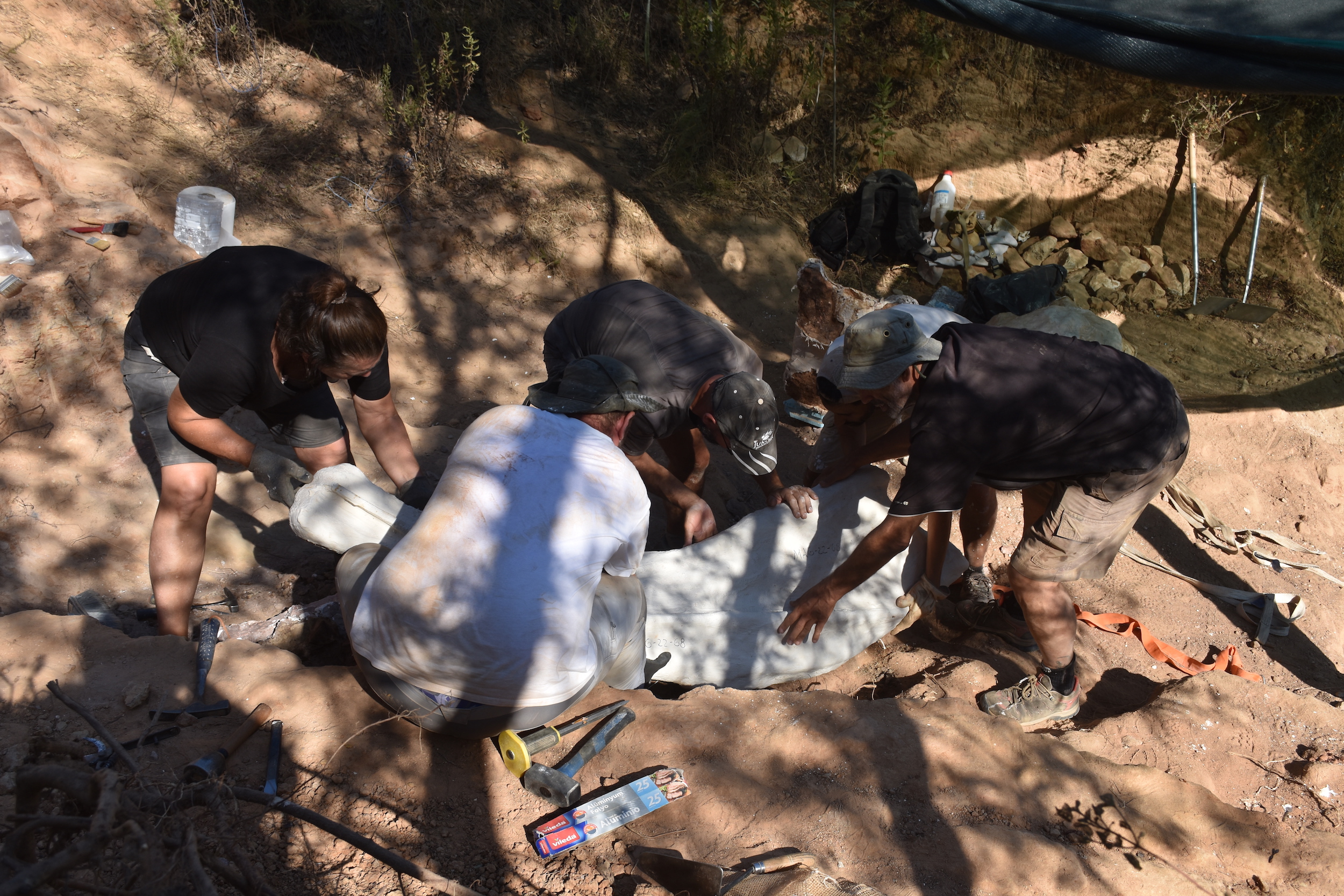
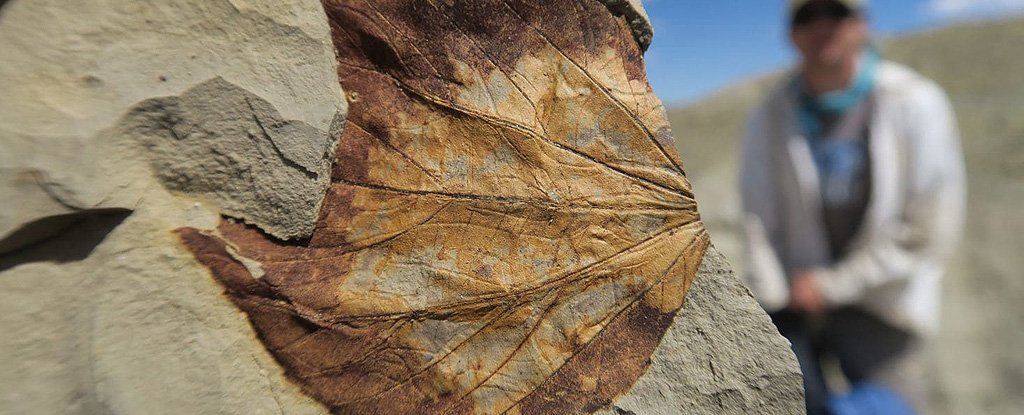
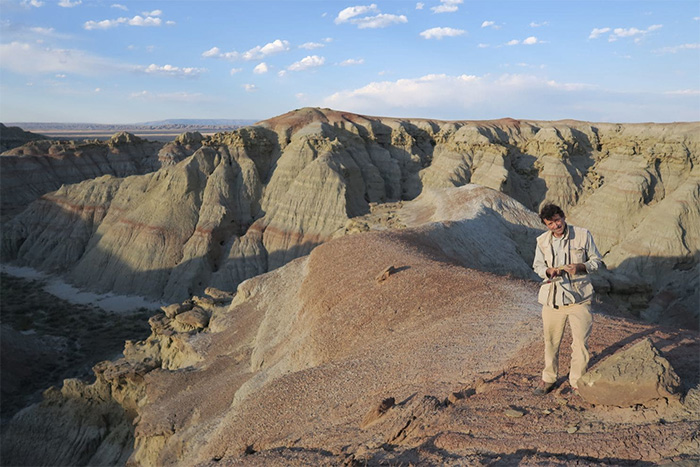 Scott Wing at Bighorn Basin (Laura Soul/The Washington Post)
Scott Wing at Bighorn Basin (Laura Soul/The Washington Post)



